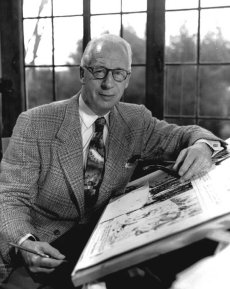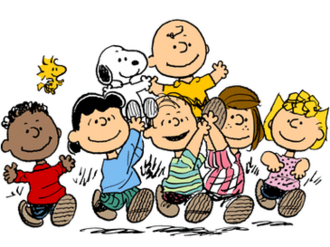I am Stuart Neiman, and I am an artist. Since the age of four, I’ve been captivated by the power of drawing to tell a story. My artistic journey began with simple sketches, and over time, it evolved into a lifelong pursuit of creating visual narratives that capture movement, emotion, and character.
For me, great art goes beyond technical skills. It’s about crafting a unified design. It draws viewers in and delivers an emotional impact. Every element serves a purpose. Whether it’s a dynamic pose or a subtle expression. At its core, art is storytelling, and my goal has always been to create pieces that resonate deeply with the audience. You want to tell a good story.
From my Earliest Memories
From my earliest memories, action has been at the heart of my work. My characters are never static—they’re in motion, full of life, energy, and purpose.
Movement has always been essential in bringing my illustrations to life, whether leaping, running, or striking a dramatic pose.
This fascination with action stems from my early influences in the world of comics, where the limits of the page were never confined to characters.
As a Young Artist
As a young artist, I was captivated by how comic book legends like Jack Kirby and Steve Ditko from Marvel managed to infuse every panel with a sense of motion and urgency.
Kirby
Kirby, often called the “King of Comics,” mastered using bold, dynamic poses and dramatic perspective to create scenes that practically burst out of the frame.
His ability to depict heroes in action—battling villains or soaring through the air—taught me how to harness energy in my work.
Ditko
Steve Ditko’s characters, on the other hand, had a unique fluidity to their movements, often twisting and turning in ways that made every gesture feel alive and meaningful.
His depiction of Spider-Man, in particular, was groundbreaking in how it portrayed the hero’s agility and grace, swinging from webs with an elegance that seemed effortless.
Ditko showed me that even in still images, you could create a sense of continuous motion—a skill I would strive to develop in my own drawings.
Beyond Superhero Comics
I was also deeply influenced by the classic adventure strip Prince Valiant by Hal Foster.
Hal Foster
Foster’s work was less about superhuman feats and more about epic journeys and historical grandeur, but his use of intricate details and sweeping, cinematic compositions taught me how to convey movement and action even in scenes that were quieter or more restrained.
Through these comics, I learned the importance of making characters feel real and relatable by placing them in dynamic action poses, creating a sense of urgency and direction within the scene. In superhero comics, the action was often fast-paced and larger than life, but in every panel, there was always a clear sense of purpose behind the movement. A story.
Prince Valiant
Hal Foster’s Prince Valiant, on the other hand, showed me a more deliberate pacing, where storytelling unfolded gradually, allowing space for the narrative to breathe between moments of action.
This balance between movement and stillness, between tension and release, profoundly influenced my approach to art. I understood that contrast is critical to holding the viewer’s attention—visual contrast through light and shadow or narrative contrast between moments of intensity and calm.
These early lessons in contrast, composition, and flow remain integral to my work today, guiding how I structure each piece to engage the audience and keep them invested in the story.

Beyond the World of action-Packed Comics
I found inspiration in the subtler storytelling of comic strips like Peanuts, Blondie, Pogo, Tumbleweed, and Dick Tracy. While these strips often focused on humor or character interactions, the artists still managed to convey motion and energy through simple gestures and expressions.
Peanuts
Peanuts creator Charles Schulz, for instance, could make Charlie Brown’s defeated walk or Snoopy’s joyous dance feel just as dynamic as any superhero’s leap.
These small moments of movement, executed with minimal lines, taught me that action didn’t always need to be explosive to have impact—it could be found in the quietest of scenes.
Dick Tracy
Likewise, Dick Tracy introduced me to the power of stylized action in a more noir setting, where detective work, car chases, and confrontations were depicted with sharp lines and dramatic contrasts, creating a sense of tension and momentum.
Each of these influences—whether they focused on epic battles, heroic poses, or the simple everyday gestures of a comic strip—helped shape my understanding of visual storytelling.
I learned that capturing movement wasn’t just about showing a character in motion; it was about using composition, contrast, and rhythm to guide the viewer’s eye across the page, building anticipation and energy along the way.
Whether it’s a single frame or a series of images, the goal is always the same: to create compositions that are full of dynamism and energy, that leap off the page and draw the viewer into the story. This foundational understanding of action and movement continues to inform my work today, driving me to create illustrations that feel alive and engaging, no matter the subject matter.
Visual Storytelling
But visual storytelling and stories isn’t just about movement—it’s about making intentional design choices that guide the viewer through the story. Every line, every shadow, every burst of color is deliberate, drawing the eye toward a focal point and immersing the audience in the scene.
I’ve always believed that effective art should lead the viewer on a journey. By using color, contrast, and composition, I can control the flow of the viewer’s gaze, directing them to key elements within the piece and helping them understand the underlying narrative.
Colors
For example, the use of bold, saturated colors can heighten the emotion of a scene, while strategic lighting can emphasize a character’s expression or movement, creating a visual rhythm that moves the story forward.
Composition
Composition plays a crucial role here too—whether it’s the positioning of characters within a frame or the balance between positive and negative space, the goal is to create a sense of harmony and purpose that captivates the viewer from the first glance.
At the heart of it all is connection—art that not only stands out but leaves a lasting impression. My aim is to create visuals that inspire and engage, transforming simple designs into powerful stories. For me, storytelling is the key to making art meaningful, whether it’s capturing the drama of a single moment or building a complex narrative across multiple images.
When a viewer sees my work, I want them to feel something, to connect with the characters and the story on an emotional level. It’s not just about creating visually striking images, but about crafting a story that resonates long after the viewer has moved on.
This is what drives my passion for art—to tell stories that linger in the mind and heart, inspiring and engaging people in ways that only visual storytelling can.
Through years of practice and inspiration from legendary artists, my work has evolved into a unique blend of action, emotion, and intentional design. From early influences in comics that taught me the power of dynamic composition, to the focus on movement and narrative that defines my art today, I strive to create pieces that are more than visually striking—they are stories that resonate.
I aim to craft illustrations that inspire, engage, and leave a lasting impact by capturing the moment’s energy and guiding the viewer’s eye. My journey as an artist and storyteller continues, driven by the desire to connect with audiences through the timeless language of visual art.








